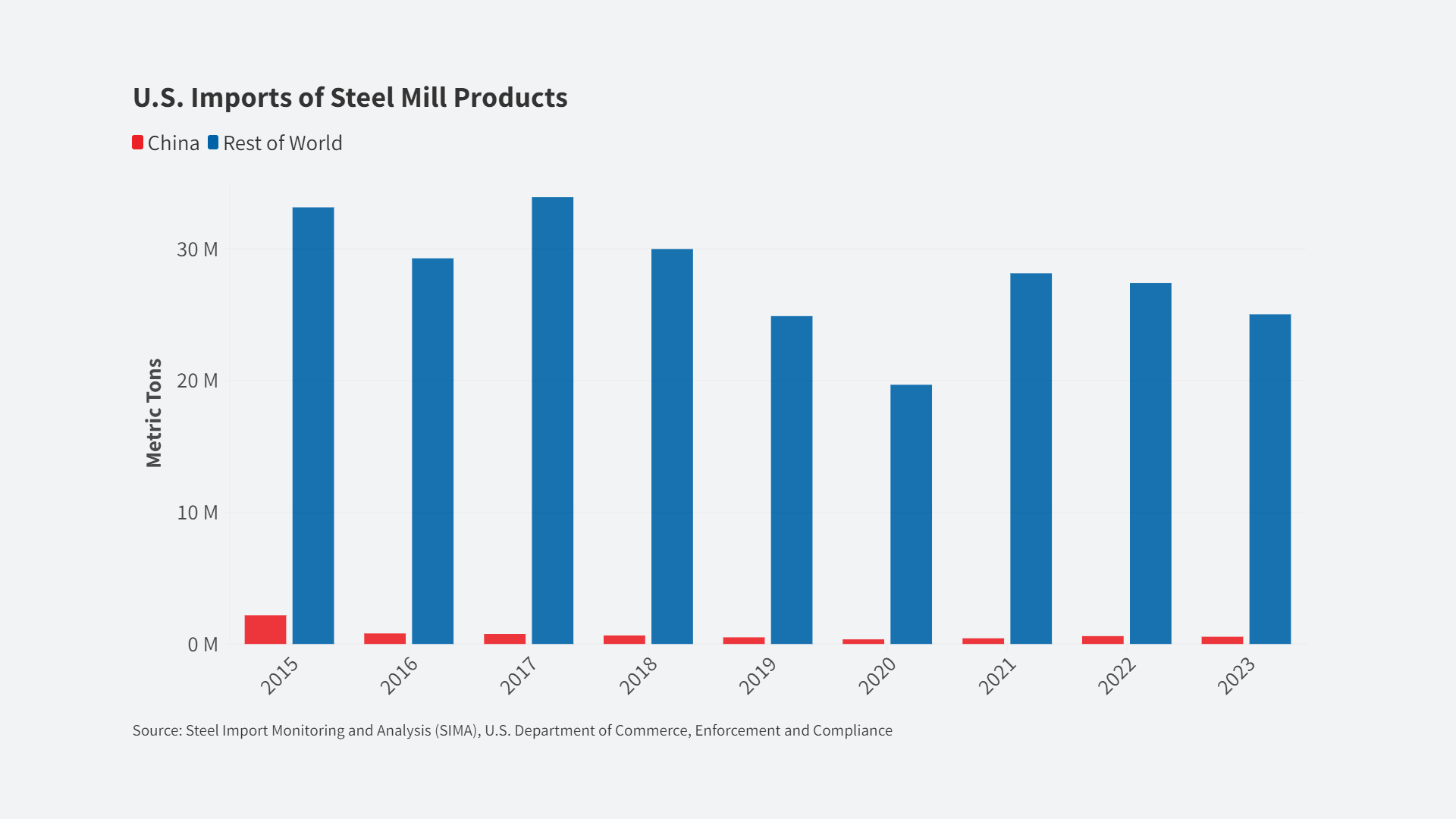
I will be testifying on your behalf regarding the Trans-Pacific Partnership today before the US International Trade Commission. The USITC is mandated to perform an economic analysis of TPP effects. CPA’s oral testimony is below. Our more detailed written testimony is here.
Trans-Pacific Partnership Agreement:
Likely Impact on the U.S. Economy and on Specific Industry Sectors
Inv. No. TPA-105-001
Oral Testimony of the
Coalition for a Prosperous America
January 15, 2016
Before the US International Trade Commission
The Coalition for a Prosperous America (CPA) appreciates the opportunity to provide testimony to the US International Trade Commission regarding the likely impact of the Trans-Pacific Partnership (TPP) on the US economy. CPA is a national, non-partisan organization focusing upon improving American trade performance, eliminating our persistent trade deficit, and growing domestic supply chains as a means to achieving broadly based prosperity in the US. Our members are organizations, companies and individuals involved in or representing manufacturing, agricultural and worker interests.
1. Summary
CPA requests that the ITC place significantly more emphasis upon overall trade competitiveness as exemplified by the balance of trade in its upcoming report on the TPP. The growth of domestic supply chains – including manufacturing, food and services – overall market share domestically and internationally should be the goal of the TPP and any trade agreement.
We recommend that ITC reduce or end its reliance upon the computable general equilibrium (CGE) model in projecting the impacts of trade agreements because that model has proven misleading to Congress and the public. The CGE model incorrectly focuses upon tariffs as the primary or exclusive cause to achieving a new equilibrium. It does not include other important causal factors that often exceed the importance of tariff cuts such as currency undervaluation, border tax increases, industrial subsidies through state-owned enterprise, reduction of uncertainty of future tariff hikes as well as other factors.
CPA believes that the TPP will cause lower GDP, lower employment and continued fracturing of our domestic supply chains through offshoring incentives. Manufacturing and food supply chains provide large economic benefits in terms of job creation, wealth creation, process and product innovation. They should be viewed as an ecosystem rather than individual company parts.
2. The TPP Countries
While the TPP consists of approximately 37% of the global economy, that number is misleading because sixty percent of the GDP of the TPP countries is the US. Another 20% of the GDP of the TPP includes countries with which the US currently has trade agreements with (Canada, Australia, Mexico, Singapore, Chile, Peru). The remaining countries constitute 20% of the GDP of the TPP countries. Specifically, Brunei (.06%), Vietnam (.6%), New Zealand (.7%), Malaysia (1.1%), and Japan (17.7%). Japan thus deserves significant focus. The Commission should bear in mind that Japan is a partially closed economy that utilizes some aspects of state capitalism through an industrial strategy to provide an international competitive advantage to its national champion industries in ways that trade agreements do not address. We cannot assume Japan or any other countries will perform like free market or free trade models predict.
3. Discussion
The Bipartisan Congressional Trade Priorities and Accountability Act of 2015 charged the ITC with submitting:
to the President and Congress a report assessing the likely impact of the agreement on the United States economy as a whole and on specific industry sectors, including the impact the agreement will have on the gross domestic product, exports and imports, aggregate employment and employment opportunities… .
The mission of the ITC includes providing independent analysis relating to the trade competitiveness of US industry. Trade competitiveness is the ability of a region to export more in value added terms than it imports when including all “terms of trade”.
Relative currency valuation is one of those terms of trade. The commission should not assume freely floating exchange rates in light of the fact that persistent currency undervaluation is an unsolved problem globally and within the TPP region. At the very least, the commission should explain how currency undervaluation can nullify or impair any projected benefits from tariff cuts.
Border adjustable consumption taxes such as value added taxes or goods and services taxes are other terms of trade. US firms pay these taxes at foreign borders. Foreign firms receive tax rebates when exporting out of the country. Many US trade rival countries have cut tariffs but increased their consumption taxes at the same time they decrease other domestic taxes. The trade competitiveness impact mimics a currency devaluation. The tactic is known as Fiscal Devaluation. Japan, for example, is raising its VAT from 5% a few years ago to 8% now and to 10% next April.
Industrial subsidies through state-owned or state-influenced industries should be included in the report. The TPP grandfathers all prior state-owned industries without addressing their impact. Our experience with China SOEs, for example, has been devastating to many US industries and are difficult to address though trade enforcement actions. The ITC’s report should address how SOEs can nullify any potential benefits.
Certainty that tariffs will not increase in the future has been shown to exaggerate the offshoring and job destruction effects of trade agreements in ways that standard economic theory does not predict. In other words, the mere fact of permanently fixing lower tariffs incentivizes US industry offshoring, increases job destruction and suppresses job creation. A 2012 analysis by the National Bureau of Economic Research, cited in my written testimony, describes how low tariff certainty supercharges offshoring and allows foreign government industrial policy to focus upon exporting to the wealthy US consumer market. The Commission should not ignore this dynamic which frustrates expected trade agreement results.
The development status of trade rival countries significantly impacts whether the US economy will benefit. US trade performance has been poor with regard to past trade agreements with larger, developed economies than with smaller, less developed economies. Ralph Gomory and William Baumol predict this developed vs. undeveloped economic effect in the book, Global Trade and Conflicting National Interests. While my written testimony discusses this dynamic in more detail, the upshot is this. Non-diverse, undeveloped economies trading more with a developed country like the US tends to be complimentary and more likely to produce win-win results. However, diverse, developed economies compete more directly with our economic sectors whereby increased market share for one country’s industry is more likely to come at the expense of the other country’s industry. The result is more win-lose. This dynamic helps explain why the US trade performance with large economies like Canada, South Korea, China and Mexico has been poor. Our trade performance with small economies has generally been better, but not enough to offset poor performance with the larger economies.
Further, the TPP provides no disproportionate market access for US firms in relation to other signatory countries. It is hard to see how the Commission can find that the US will benefit from any market opening when all other TPP countries receive similar market access. Without disproportionate market access, we believe that there is not grounds to conclude that the US economy will benefit.
Similarly, weak rules of origin provide market access for non-signatory countries to benefit from low tariff treatment. The Commission should take into account the extent of third-country free ridership when drafting its report.
GDP projections in the Commission’s report should include net trade in its calculus. As you are aware, GDP is the sum of private consumption plus investment plus government consumption plus net trade flows. Exports add to GDP while imports subtract. Other government agencies use this standard GDP calculation but past Commission reports have not. The Commission should be clear that net trade is the issue for GDP growth rather than merely exports.
The Commission’s analysis of employment impacts should not presume full employment. CGE models have been rightly criticized for assuming that individuals are perfectly rational, that the economy is constantly in a state of full employment and that income distribution follows a simple rule, namely that wages increase at the same rate as productivity. Because these assumptions are generally not reflective of modern reality, the Commission should consider abandoning the CGE model. The Commission should consider giving at least equal treatment to the United Nations Global Policy Model which does not include these incorrect assumptions. At the very least, any future report should explicitly describe what happens to CGE results in the absence of full employment and constant income distribution.
In sum, it is not the job of the Commission to make policy choices or to recommend the approval or rejection of the TPPP. There have been many claims regarding the future impact of the TPP which are not grounded in sound analysis. The Commission’s role is to provide solid independent analysis. The Coalition for a Prosperous America urges the Commission to improve the accuracy of its trade agreement projections so the Congress and the public can make good decisions. Thank you.
Michael Stumo, CEO
Coalition for a Prosperous America













